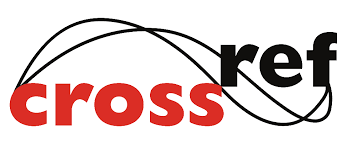Principles of demodecosis treatment
DOI:
https://doi.org/10.30574/gscbps.2018.4.1.0045Keywords:
Antiparasitic therapy, Demodex, Demodecosis, TreatmentAbstract
The article presents an overview of the main modern methods of treatment of demodecosis, the main antiparasitic drugs and alternative treatment regimens, their advantages and disadvantages. The aim of the study was to compare combined method of demodecosis treatment with external treatment with 7% metronidazole. 64 patients with acne and rosacea complicated demodecosis, which were divided into two groups depends on a method of treatment (250 mg of metronidazole per os 2 times a day, externally 1% metronidazole once a day for 20 days or 7% metronidazole externally, 20 days, respectively). The effectiveness of therapy in both groups was the same. It was a significant decrease in the number of morphological elements, reduction of subjective complaints of patients after the treatment. This study represents a lack of superiority in systemic therapy of demodecosis, compared to external therapy.
Metrics
References
Lazaridou E, Giannopoulou C, Fotiadou C, Vakirlis E, Trigoni A and Ioannides D. (2011). The potential role of microorganisms in the development of rosacea. Journal der Deutschen Dermatologischen Gesellschaft, 9, 21-25
Schommer NN and Gallo RL. (2013). Structure and function of the human skin microbiome. Trends in Microbiology, 21(12), 660-668
Hsu CK, Hsu MM and Lee JY. (2009). Demodicosis: A clinicopathological study. Journal of the American Academy of Dermatology, 60, 453–462
Jansen T and Plewig G. (1996). Klinik und Therapie der Rosazea. Zeitschrift für Hautkrankheiten, 71, 88-95
Werner H, Krasemann C, Kandler R and Wandmacher G. (1980). Metronidazole sensitivity of anaerobes. A comparison with other chemotherapeutics. Munchener Medizinische Wochenschrift, 122(17), 633-636
Grove DI, Mahmoud AAF and Warren KS. (1997). Supression of cellmediated Immunity by Metronidazole. International Archives of Allergy and Immunology, 54(5), 422-427
Nielsen PG. (1988). Metronidazole treatment in rosacea. International Journal of Dermatology, 27(1), 1-5
Barnhorst D, Foster J, Chern K. (1996). The efficacy of topical metronidazole in the treatment of ocular rosacea. Ophthalmology, 103(11), 1880-1883
Patrizi A, Neri I, Chieregato C and Misciali M. (1997). Demodicidosis in immunocompetent young children: report of eight cases. Dermatology, 195(30), 239–242
Pallotta S, Cianchini G, Martelloni E, Ferranti G, Girardelli CR, Di Lella G and Puddu P. (1998). Unilateral demodicidosis. European Journal of Dermatology, 8(3), 191-192
Forton F, Seys B, Marchal JL and Song AM. (1998). Demodex folliculorum and topical treatment: acaricidal action evaluated by standardized skin surface biopsy. British Journal of Dermatology, 138(3), 461-466
Forton FM. (2012). Papulopustular rosacea, skin immunity and Demodex: pityriasis folliculorum as a missimg link. Journal of the European Academy of Dermatology and Venereology, 26(1), 19-28
Karincaoglu M, Bayram N, Aycan O and Esrefoglu M. (2004). The clinical importance of demodex folliculorum presenting with nonspecific facial signs and symptoms. The Journal of Dermatology, 31(8), 618-626
Swenor ME. (2003). Is permetrin 5% cream effective for rosacea? The Journal of Family Practice, 52(3), 183-184
Dourmishev AL, Dourmishev LA and Schwartz RA. (2005). Ivermectin: pharmacology and application in dermatology. International Journal of Dermatology, 44(12), 981-988
Gupta G, Daigle D, Gupta AK and Gold LS. (2015). Ivermectin 1% cream for rosacea. Skin Therapy Letter, 20(4), 9-11
Holzchuh FG, Hida RY, Moscovoci BK, Villa Albers MB, Santo RM, Kara-Jose N and Holzchuh R. (2011). Clinical treatment of ocular Demodex folliculorum by systemic ivermectin. American Journal of Ophtalmology, 151(6), 1030-1034
Costa LG. (2015). The neurotoxicity of organochlorine and pyrethroid pesticides. Handbook of Clinical Neurology, 131, 135-148
Parodi A, Drago F, Paolino S, Cozzani E and Gallo R. (2011). Treatment of rosacea. Annales De Dermatologie Et De Venereologie, 138 Suppl 3, S211-214
Bikowski JB and Del Rosso JQ. (2009). Demodex dermatitis: a retrospective analysis of clinical diagnosis and successful treatment with topical crotamiton. The Journal of Clinical and Aesthetic Dermatology, 2(1), 20-25
Goldman MP, Weiss RA and Weiss MA. (2005). Intense Pulsed Light as a Nonablative Approach to Photoaging. Dermatologic Surgery, 31, 1179-1187
Prieto VG, Sadick NS, Lloreta J, Nicholson J and Shea CR. (2002). Effects of intense pulsed light on sun-damaged human skin, routine, and ultrastructural analysis. Lasers in Surgery and Medicine, 30(2), 82-85
Beridze LR, Katsitadze AG and Katsitadze TG. (2009). Cryotherapy in treatment of skin demodecosis. Georgian Medical News, 170, 43-55.
Downloads
Published
How to Cite
Issue
Section
License

This work is licensed under a Creative Commons Attribution-NonCommercial-ShareAlike 4.0 International License.
















